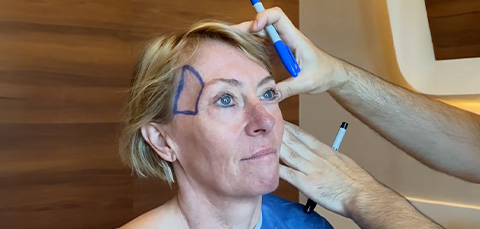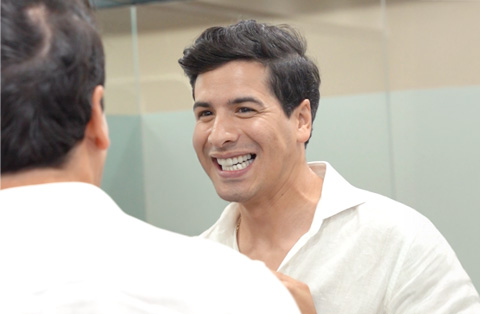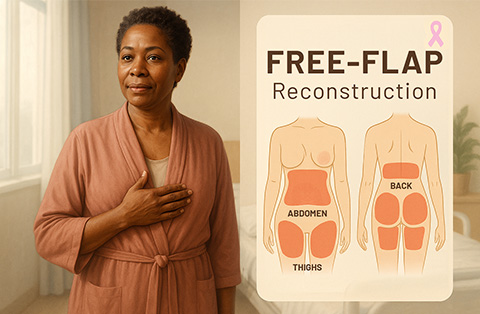Facial reconstruction surgery restores function and appearance after trauma, disease, or birth defects. Advanced techniques help patients regain confidence, improve facial symmetry, and enhance quality of life.
What is Facial Reconstruction Surgery?
Facial reconstruction surgery is a procedure that restores the structure and function of the face. It is performed to repair damage caused by trauma, congenital conditions, cancer, or other medical issues. The goal is to improve both appearance and function, helping patients regain confidence and quality of life.
This surgery may involve skin grafts, bone reconstruction, or soft tissue repair. Surgeons use advanced techniques to achieve natural-looking results while maintaining facial movement and sensation.
How does facial reconstruction work?
Facial reconstruction surgery involves a combination of surgical techniques to restore damaged or missing facial structures. The approach depends on the patient's condition, the extent of the damage, and the desired outcome.
Key Steps in the Procedure:
Evaluation and Planning – The surgeon assesses the damage using imaging techniques like CT scans and 3D modeling to plan the surgery.
Tissue Repair or Replacement – Skin grafts, bone grafts, or implants may be used to rebuild facial structures.
Microvascular Surgery – In complex cases, surgeons transfer tissue with its blood supply from another part of the body to the face.
Bone Reconstruction – If facial bones are damaged, they may be repositioned, fixed with plates, or replaced with grafts.
Soft Tissue Reconstruction – Muscles and nerves may be repaired to restore function and facial expressions.
Final Adjustments – Additional procedures, such as scar revision or cosmetic refinements, may be performed for a natural appearance.
Recovery time varies based on the complexity of the procedure. Some patients may need multiple surgeries to achieve the best results.
Who needs facial reconstructive procedures?
Facial reconstructive procedures are for individuals who need to restore function or appearance due to medical conditions, trauma, or congenital defects. These surgeries help improve breathing, speaking, eating, and overall facial symmetry.
Common Candidates:
Trauma Patients – Those with facial fractures, burns, or soft tissue injuries from accidents.
Cancer Patients – Individuals who have lost facial tissue due to tumor removal.
Congenital Conditions – People born with cleft lip, cleft palate, or other facial deformities.
Infection or Disease Survivors – Patients who experienced severe infections or conditions like necrotizing fasciitis.
Burn Victims – Those with extensive facial burns requiring skin grafts or tissue reconstruction.
Each patient’s treatment is customized to their specific needs for the best functional and cosmetic outcomes.
What are the goals of reconstruction surgery?
The goals of facial reconstruction surgery focus on restoring function, improving appearance, and enhancing quality of life. Each procedure is tailored to the patient’s specific condition and needs.
Main Objectives:
Restoring Function – Helps with breathing, eating, speaking, and facial movement.
Repairing Damage – Reconstructs tissues lost due to trauma, disease, or surgery.
Improving Aesthetics – Enhances facial symmetry and natural appearance.
Boosting Confidence – Helps patients feel more comfortable with their appearance.
Preventing Further Complications – Supports healing and prevents long-term issues like infections or deformities.
The ultimate goal is to achieve the most natural and functional outcome while maintaining the patient’s health and well-being.
Types of Facial Plastic and Reconstructive Surgery
Facial plastic and reconstructive surgery includes various procedures designed to restore function and improve appearance. The type of surgery depends on the patient’s condition and needs.
Common Types of Facial Reconstruction:
Trauma Reconstruction – Repairs facial fractures, burns, or soft tissue injuries.
Cancer Reconstruction – Restores facial structures after tumor removal, often using skin or tissue grafts.
Cleft Lip and Palate Repair – Corrects congenital defects to improve speech, eating, and appearance.
Microvascular Free Tissue Transfer – Moves tissue with its blood supply from another body part to the face.
Nerve Repair and Facial Reanimation – Restores movement in cases of facial paralysis or nerve damage.
Bone Grafting and Jaw Reconstruction – Rebuilds missing or damaged bone in the face and jaw.
Scar Revision Surgery – Improves the appearance of scars from injury, burns, or surgery.
Each procedure is customized to achieve the best functional and cosmetic results.
How to Choose a Qualified Surgeon?
Choosing a qualified surgeon is essential for achieving the best results in facial reconstruction surgery. Patients should look for a specialist with experience, proper credentials, and a strong track record.
Key Factors to Consider:
Board Certification – Ensure the surgeon is certified by a recognized medical board in plastic or reconstructive surgery.
Experience and Specialization – Choose a surgeon with expertise in facial reconstruction, particularly for your specific condition.
Before-and-After Photos – Review previous patient results to assess the surgeon’s skill.
Hospital Affiliation – A surgeon working with accredited hospitals ensures access to high-quality care.
Patient Reviews and Testimonials – Check feedback from other patients for insights into the surgeon’s reputation.
Consultation and Communication – A good surgeon listens to concerns, explains the procedure, and sets realistic expectations.
Taking the time to research and consult with multiple surgeons can help in making the best decision for a safe and successful outcome.
What is the Planning and Recovery Process?
Pre-Surgery Planning
Medical Evaluation – The surgeon reviews the patient’s medical history and conducts imaging tests (CT scans, X-rays).
Customized Surgical Plan – A treatment approach is designed based on the patient’s needs.
Pre-Op Instructions – Patients may need to stop smoking, adjust medications, and follow dietary guidelines before surgery.
Post-Surgery Recovery
Hospital Stay – Some procedures require an overnight stay, while minor surgeries may be outpatient.
Pain Management – Medications help control discomfort and swelling.
Wound Care – Proper hygiene and dressing changes are essential for healing.
Follow-Up Visits – Regular check-ups monitor progress and address complications.
Gradual Healing – Swelling and bruising subside within weeks, but full recovery may take months.
Following the surgeon’s aftercare instructions ensures a smoother recovery and better results.
Risks of Facial Reconstruction Surgery
Facial reconstruction surgery is generally safe when performed by an experienced surgeon. However, like any surgical procedure, it carries some risks.
Infection – Proper wound care and antibiotics help reduce the risk.
Bleeding – Some swelling and bruising are normal, but excessive bleeding may require medical attention.
Scarring – Surgeons aim to minimize scars, but some may be visible.
Nerve Damage – Temporary or permanent loss of sensation or movement may occur.
Asymmetry – The face may not heal evenly, requiring adjustments.
Graft or Implant Failure – Transferred tissue or implants may not integrate properly.
Anesthesia Complications – Rare but possible reactions to anesthesia.
Patients should follow post-surgery care instructions and attend follow-up appointments to minimize complications.
How much does facial reconstruction surgery cost?
The cost of facial reconstruction surgery varies based on the complexity of the procedure, the surgeon’s expertise, and the country where it is performed.
Average Costs by Region:
United States – Generally the highest costs due to medical fees, hospital charges, and insurance factors. Complex procedures can cost tens of thousands of dollars.
United Kingdom – Private surgery can be expensive, though some cases may be covered by the NHS if medically necessary.
Western Europe – Costs vary by country, with nations like Germany and France offering high-quality care at slightly lower prices than the US.
Why Turkey is a Top Choice?
Turkey offers world-class quality at significantly lower prices compared to the US and Western Europe. The country has internationally accredited hospitals, experienced surgeons, and advanced medical technology. Many clinics offer all-inclusive packages covering surgery, accommodation, and aftercare, making it a cost-effective yet high-standard option for patients seeking facial reconstruction.
Can cosmetic surgery be combined with reconstructive procedures?
Yes, cosmetic surgery can be combined with reconstructive procedures to enhance both function and appearance. This approach helps patients achieve the best possible aesthetic and medical outcomes in a single surgical plan.
Common Combinations:
Scar Revision with Skin Grafting – Improves the appearance of scars while restoring damaged tissue.
Facial Trauma Repair with Rhinoplasty – Corrects nasal fractures while enhancing nose shape.
Cancer Reconstruction with Cosmetic Refinements – Restores tissue lost from tumor removal while improving facial symmetry.
Facial Nerve Surgery with Eyelid or Brow Lift – Restores movement while enhancing facial balance.
Combining procedures can reduce overall recovery time and provide more natural-looking results. Surgeons customize the approach based on the patient’s needs and goals.






